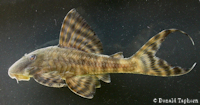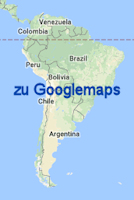nocturnus (lat.) - Nacht; wegen der dunklen Dorsale und den dunklen paarigen Flossen
Synonyme
Dusky panaque
nicht gefährdet (Least Concern)
Länge (total)
etwa 18 cm
Standardlänge (dokumentiert)
144,0 mm
Empfohlene Aquariengröße
120 cm
Temperatur
24 - 28 °C
Ernährung (überwiegend): Holzfresser
Frisst Pflanzen
ja
Die Haltung in (kleinen) Gruppen ist zu empfehlen. Einzelhaltung ist möglich.
von der Gattung: Männchen haben einen stärkeren Odontodenbewuchs und eine schlankere Taille.
von der Gattung: Standard
unbekannt
vorhanden
Panaqolus dentex
Panaqolus purusiensis
Panaqolus sp. "L 329" / "LDA 27" (identisch?)
Panaqolus sp. "L 351" (identisch?)
Panaqolus purusiensis
Panaqolus sp. "L 329" / "LDA 27" (identisch?)
Panaqolus sp. "L 351" (identisch?)
nicht bekannt
- Tanke, Andreas: "Ein erster Überblick über eine beliebte Harnischwelsgattung"
(DATZ 7/2013 - "Wels-Presseschau") - Konn-Vetterlein, Daniel: "Zwei wenig bekannte Harnischwelse: Parancistrus sp. L332 und Panaqolus sp. L351"
(Aquaristik Fachmagazin Dezember 2017 / Januar 2018)
- Schaefer, Scott A. & Stewart, Donald J., 1993 "Systematics of the Panaque dentex species group (Siluriformes: Loricariidae), wood-eating armored catfishes from tropical South America" (Ichthyological Exploration of Freshwaters, Vol 4 No. 4, S. 330)
- German, D.P., 2009 "Inside the guts of wood-eating catWshes: can they digest wood?"
- Cramer & Rapp Py-Daniel, 2015 "A new species of Panaqolus (Siluriformes: Loricariidae) from the rio Madeira basin with remarkable intraspecific color variation" (Neotropical Ichthyology, Vol. 13 No. 3, S. 469)
- Tan, M.; Souza, L.S. de & Armbruster, J.W., 2016 "A new species of Panaqolus (Siluriformes: Loricariidae) from the rio Branco" (Neotropical Ichthyology)
- Cramer, C.A. & de Sousa, L.M., 2016 "A New Species of Tiger Pleco Panaqolus (Siluriformes: Loricariidae) from the Xingu Basin, Brazil" (PLOS one, S. 16)
- Lujan, N.K.; Cramer, C.A.; Covain, R., Fisch-Muller, S. & López-Fernández, H, 2017 "Multilocus molecular phylogeny of the ornamental wood-eating catfishes (Siluriformes, Loricariidae, Panaqolus and Panaque) reveals undescribed diversity and parapatric clades" (Molecular Phylogenetics and Evolution, Vol. 109, S. 333)
- Mccauley, M.; German, D.P.; Lujan, N.K. & Jackson, C.R., 2020 "Gut microbiomes of sympatric Amazonian wood‐eating catfishes (Loricariidae) reflect host identity and little role in wood digestion" (Ecology & Evolution)
- --- finde mehr ---



